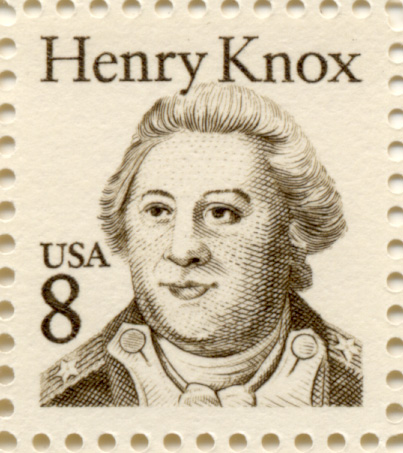Ellen Newbold April 5th
Centelle Harrison April 19th

Flag Note...
When displayed either horizontally or vertically against a
wall, the union should be uppermost and to the Flag’s own right, that is, to the observer’s left. When displayed in a window, the Flag should be displayed in the same way, with the union or blue field to the left of the observer in the street.

(from the internet)
The American Revolutionary War, as it involved Irish American immigrants, was almost a civil war in nature, as Irish soldiers fought both for the American Continental Army and for the British. Infused with the spirit of independence, large numbers of Irish fought for the freedom promised by a new beginning with a government based on individual rights not yet known in the old world. In many ways, this spirit and the actions taken across the Atlantic from the Old Sod, were precursors to the battles yet to be fought for rights of independence for Ireland itself, and eventually for Northern Ireland.
Following the War of Independence, Irish Americans displayed their fervor for the new nation in celebration, and in parades, not only on 17 March for St. Patrick’s Day, but also on in fourth of July parades honoring the new nation.
Many Irish did more than just take up muskets to aide the new nation, many also participated in the formulation of the new government. Thomas McKean, for example, whose parents came from Ireland to American as young children, was the 8th President of the Continental Congress and a
signer of the Declaration of Independence. Three other signers were born in Ireland: Matthew Thornton, George Taylor and James Smith.
It was in the mid-1790’s that the Charitable Irish Society of Boston began again, after several decades, to hold its annual dinners on St. Patrick’s Day. This gave new impetus to establishing the holiday as a very special day in Irish society, as the elite of Boston’s Irish community attended, including in 1797, Secretary of War Henry Knox. The society collected pricey fees to attend, all to the benefit of Boston’s Irish needy.

Catholic immigration from Ireland began to increase in the
1780s, and continued to do so for the next 40 years, as religious
freedoms in the new USA were more than attractive to Catholics in
Ireland, who were faced with ongoing restrictions on their religious
practices. This wave of Catholics into American Irish society included
new members gaining control of various organizations, including the
Charitable Irish Society of Boston, and the effect was readily seen in
St. Patrick’s Day celebrations. While the wealthy Protestant elite had
observed subdued and generally private celebrations, the more vocal
and vibrant Irish Catholic personality introduced more enthusiastic public festivities.
wall, the union should be uppermost and to the Flag’s own right, that is, to the observer’s left. When displayed in a window, the Flag should be displayed in the same way, with the union or blue field to the left of the observer in the street.
St. Patrick’s Day and
The American Revolution

The American Revolutionary War, as it involved Irish American immigrants, was almost a civil war in nature, as Irish soldiers fought both for the American Continental Army and for the British. Infused with the spirit of independence, large numbers of Irish fought for the freedom promised by a new beginning with a government based on individual rights not yet known in the old world. In many ways, this spirit and the actions taken across the Atlantic from the Old Sod, were precursors to the battles yet to be fought for rights of independence for Ireland itself, and eventually for Northern Ireland.
Following the War of Independence, Irish Americans displayed their fervor for the new nation in celebration, and in parades, not only on 17 March for St. Patrick’s Day, but also on in fourth of July parades honoring the new nation.
Many Irish did more than just take up muskets to aide the new nation, many also participated in the formulation of the new government. Thomas McKean, for example, whose parents came from Ireland to American as young children, was the 8th President of the Continental Congress and a
signer of the Declaration of Independence. Three other signers were born in Ireland: Matthew Thornton, George Taylor and James Smith.
It was in the mid-1790’s that the Charitable Irish Society of Boston began again, after several decades, to hold its annual dinners on St. Patrick’s Day. This gave new impetus to establishing the holiday as a very special day in Irish society, as the elite of Boston’s Irish community attended, including in 1797, Secretary of War Henry Knox. The society collected pricey fees to attend, all to the benefit of Boston’s Irish needy.

Catholic immigration from Ireland began to increase in the
1780s, and continued to do so for the next 40 years, as religious
freedoms in the new USA were more than attractive to Catholics in
Ireland, who were faced with ongoing restrictions on their religious
practices. This wave of Catholics into American Irish society included
new members gaining control of various organizations, including the
Charitable Irish Society of Boston, and the effect was readily seen in
St. Patrick’s Day celebrations. While the wealthy Protestant elite had
observed subdued and generally private celebrations, the more vocal
and vibrant Irish Catholic personality introduced more enthusiastic public festivities.
Though the early 1800s an interesting phenomenon was becoming increasingly obvious:
Irish fervor and excitement for celebration became more and more directed to nationalism, and
St. Patrick’s Day events began taking a backseat to Fourth of July festivities. Irish Catholic
immigration had been slowing due to emigration restrictions placed on Catholics by the British,
but by the late 1820s, liberalized rules were passed, resulting in a new influx of Irish Catholics to
America, and with it renewed fervor for celebrating the day of St. Patrick.


No comments:
Post a Comment